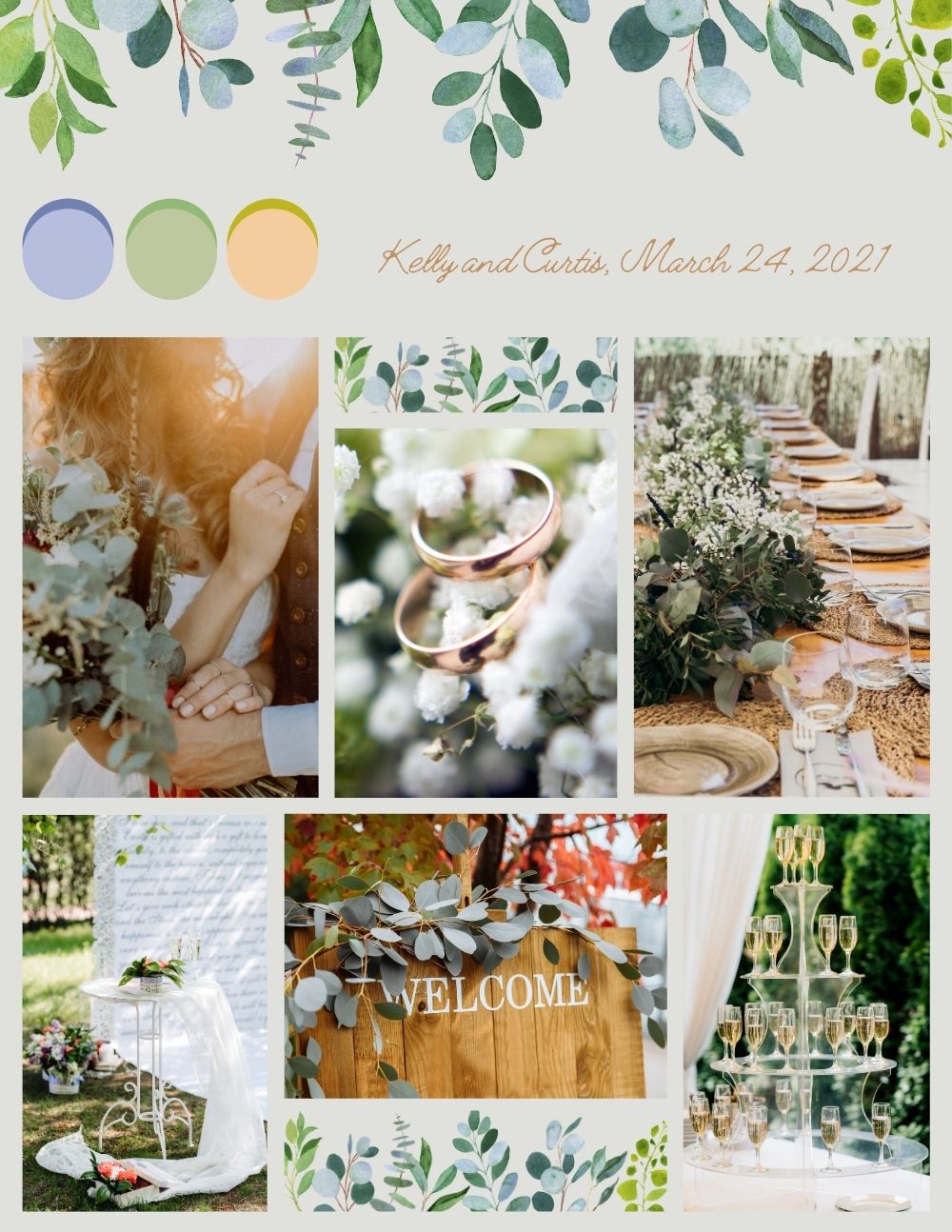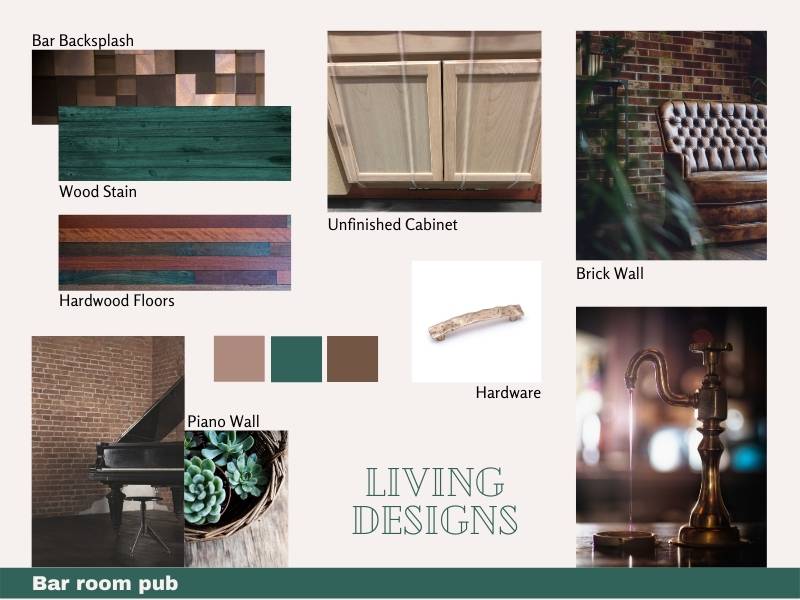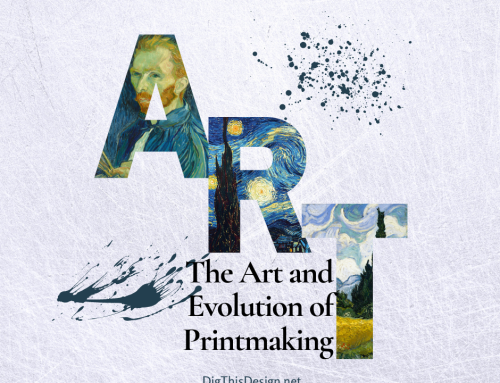Are you starting on a new creative project? If it involves the use of color and themes, your project might just benefit from designing your own mood boards. In case you aren’t aware, a mood board is a tool used to visually represent and communicate information. It’s sometimes made by sticking various materials on a physical board. Or, you can also design one digitally by using a mood board maker tool.
These graphic delights are especially helpful if your project involves collaborating with others—such as your wedding planner or clients (as you’ll see in this post). If this is something that interests you, then, please read on to learn four reasons to use a mood board for your project and some tools you can use to make your own.
4 Reasons to Create Mood Boards for Your Projects
1. Get a clear idea of your projects.
When starting a project, it’s tempting to keep all your ideas in your head. But doing this can make it hard to visualize your ideas and see the relationships between them. However, creating mood boards helps you present your ideas in a tangible format and arrange them in a way that makes sense.
For example, when blogger Shalan Trotz Premo was planning her wedding, she and her fiancé created multiple mood boards to brainstorm their wedding’s ideal look—from its color scheme to its decorations.
You too can perfect your wedding plans by creating your own such as the one below. Of course, there are many, many variations to this and you can let your creativity flow freely as is illustrated in the mood board below.

2. Involve clients in projects from the very start.
If you’ve been hired by a client for a design project, doing up a mood board is a good opportunity for you to get information on their requirements.
Representing the project’s intended look in a visual form also helps you ensure that both of you are on the same page from the beginning—instead of having to redo a project midway due to misunderstandings.
In 2020, interior design firm Laura U Interior Design was hired to design the interior of a home in Braeswood Place in Texas. The client instructed that the design should reflect the family’s Irish heritage while providing space for the family to play sports together. Therefore for the house’s pub room, you can click through the link to see what the firm came up with from an Irish-inspired mood board.
Here is our rendition of a pub room inspired mood board for your enjoyment.

3. Discuss projects with clients more meaningfully.
Different people may visualize concepts differently from others, based on their experiences and backgrounds. How can you be sure that what you come up with is in line with what your client wants?
Creating a mood board can help with just that, by facilitating discussions about the project and the client’s wishes.
When freelance web designer Renessa S works with clients, she takes care to understand what they really want.
For example, a client might say that they want something “fun.” However, as Renessa’s idea of “fun” might be different from what her client has in mind, she would ask: “What does ‘fun’ look like to you?”
The client would describe concepts that represent “fun” to them, which Renessa collects into a mood board. She then refers to this mood board when creating designs for the client.
4. Ensure consistency in design style and aesthetics.
When it comes to amazing design, consistency is key. A single visual element that’s out of place—even if this is barely noticeable—can be enough to ruin a beautifully crafted design. By putting down your chosen colors and aesthetics in a mood board, you’ll be able to keep going back to them so that the look of your project doesn’t go astray.
Every month, crafting blog Dusty Attic releases a new mood board challenge that is made out of paper and posts its own craft interpretations of that month’s theme. We invite you to click through this link to see the challenge for August 2020 along with the winning entry. As you can see, the craft incorporates all the color requirements in the mood board and follows its floral theme perfectly. Not an element is out of place in this make at home scrap paper mood board.
Below is an example of the necessary tools along with some ideas for a scrap paper mood board all your own.

2 tools for getting started with mood boards.
1. Mood board maker: PosterMyWall
While you could make a physical mood board by sticking materials, photos and images onto a board, consider using a digital mood board maker instead.
Such tools make it easy to flexibly rearrange the various elements of your mood board, as well as give you potentially unlimited space to work on.
PosterMyWall is one example of a digital mood board maker. You could start with a blank canvas, or use one of the premade mood board templates.
Then, use the provided shapes or upload your own images to flesh out your mood board.
Downloading a watermarked copy of your mood board is free, while there is a small fee if you need a higher quality image.
2. Color picker: Adobe Color
Manually picking colors for your mood board can be a headache. This is especially if you’re not too sure which colors go well with others.
Fortunately, you can use a color picker tool to do such heavy lifting for you!
In this regard, Adobe Color is a popular choice. When you load the tool, you will see a color wheel followed by a row of five colors:
To get started, pick a base color. This is the color that all other colors in your color palette will take reference from. Set this color as the third color in the row.
After this, choose one of the color combinations on the left to automatically generate different color palettes.
When you’ve found your favorite, you can copy the HTML or RGB codes for that palette’s colors to use in a digital mood board.
In the mood to make a mood board?
Using a mood board for your next project has many benefits, from helping you better visualize your ideas to facilitating better communication with your clients, as well as maintaining design consistency in your project.
If you prefer a more hands-on approach to making a mood board, you might enjoy cutting and pasting different materials onto a physical board. Otherwise, there are many tools out there that make creating a digital mood board a convenient and attractive option. Happy mood board making!
Thank you for reading! If you have any further suggestions, we’d love to hear from you in the comments below. Also below, you will find links to more useful articles about ALL things DESIGN for your home or business.
Images Courtesy of Canva.
Other Posts You Might Enjoy:
Buying a Home: Tips to Get Comfortable in Your New Place
A Blueprint For A Minimalist Bedroom: Create Your Own Oasis Of Calm





